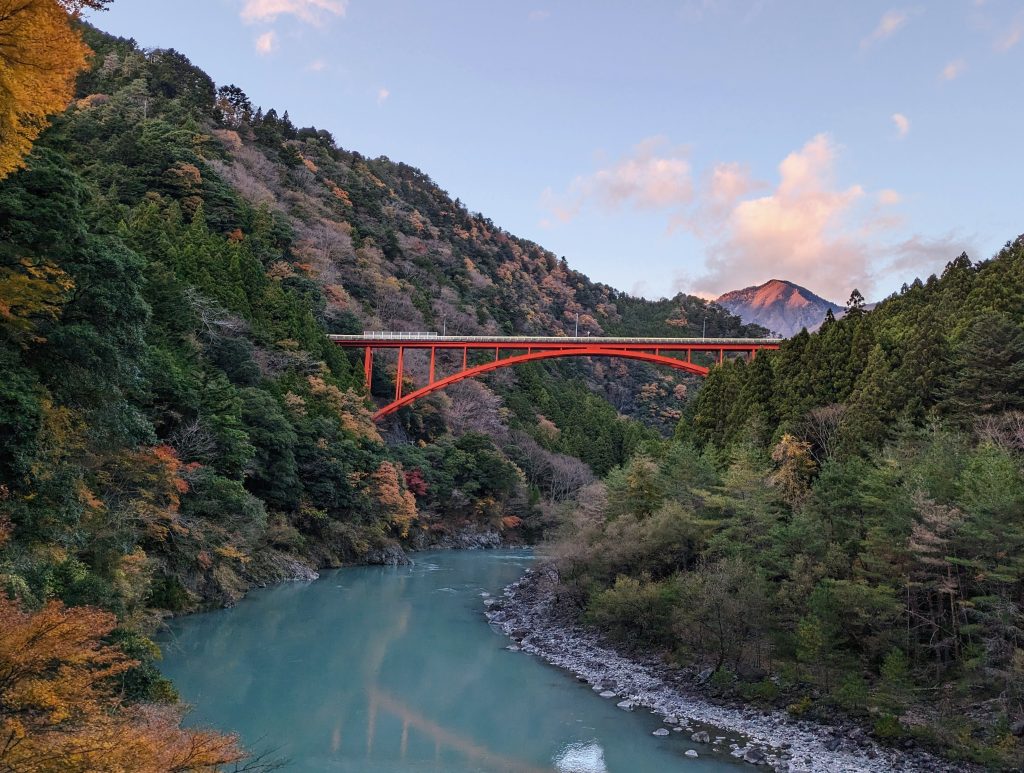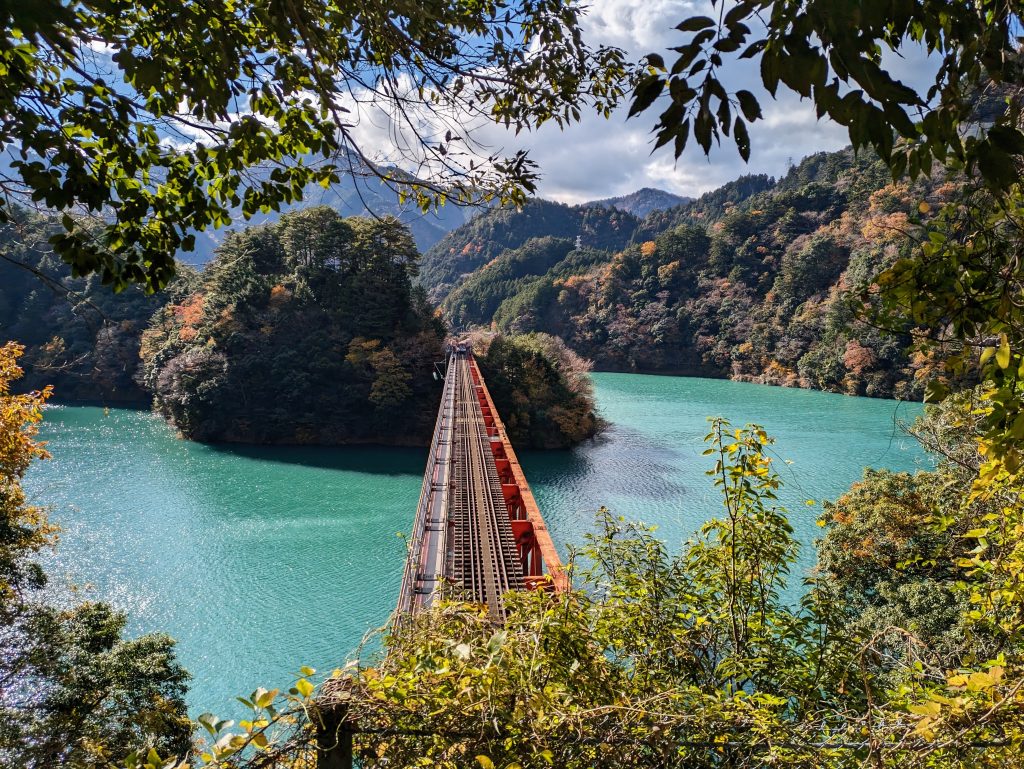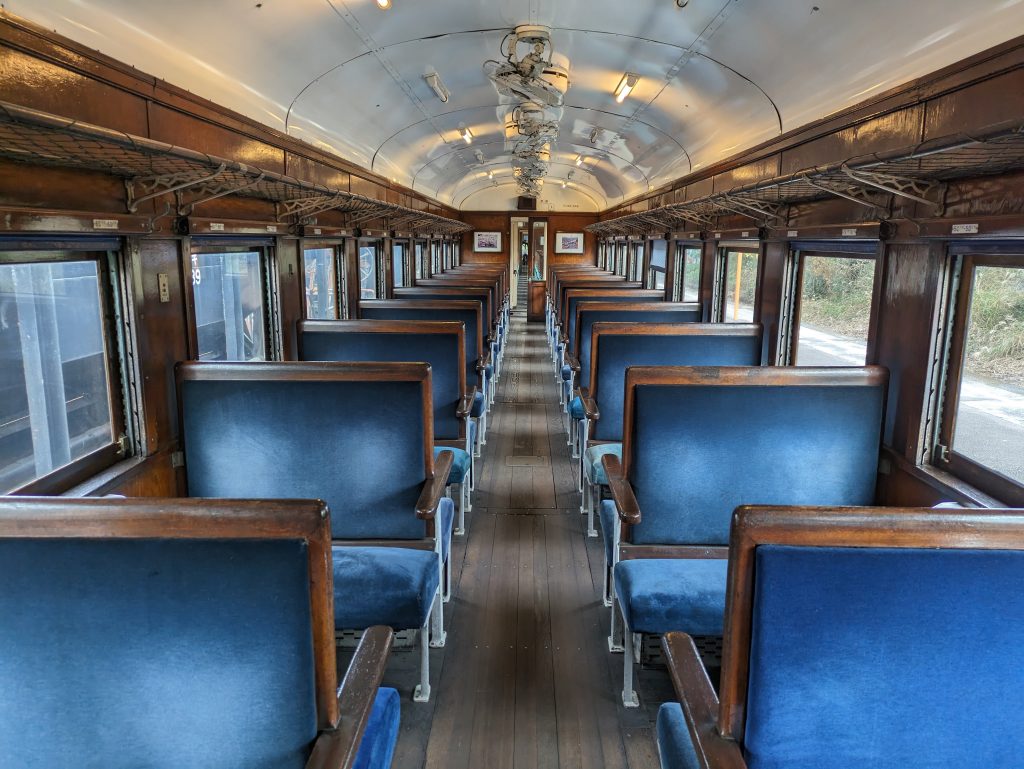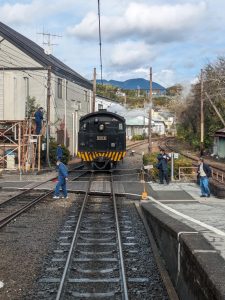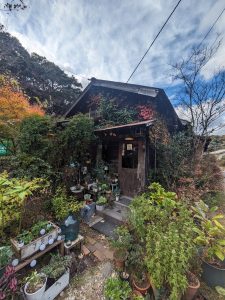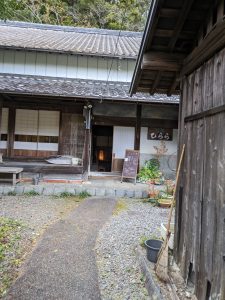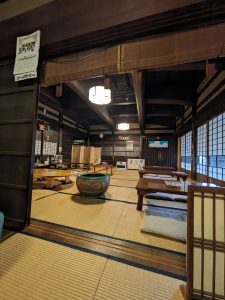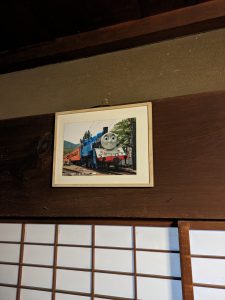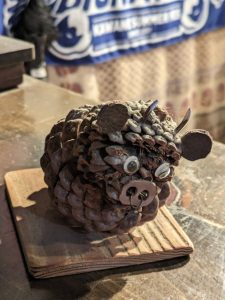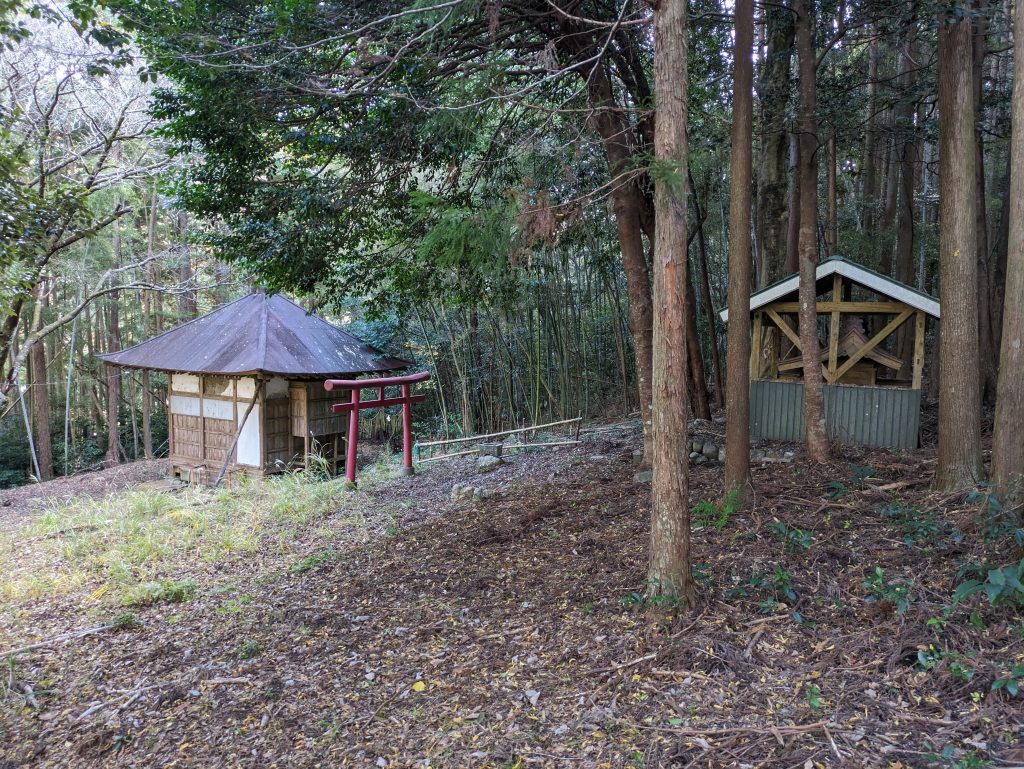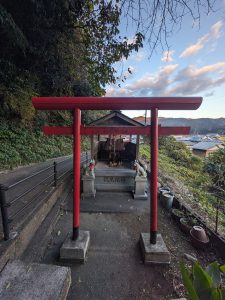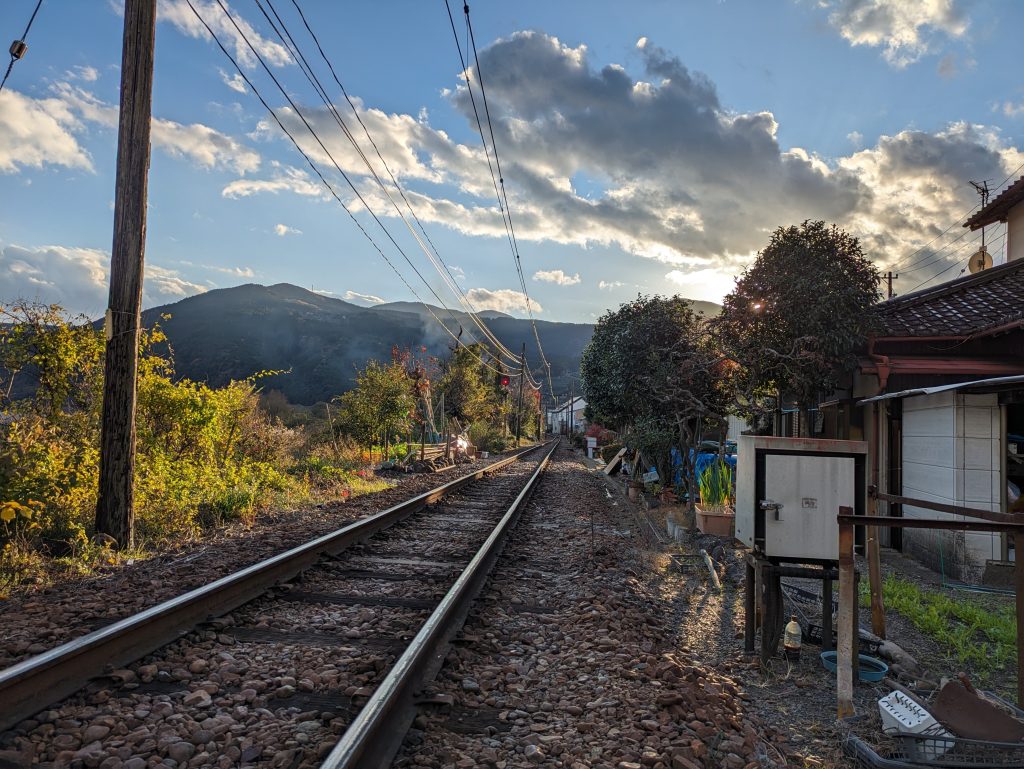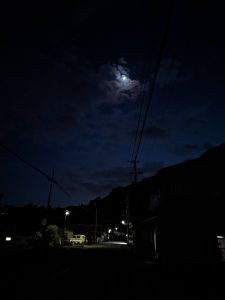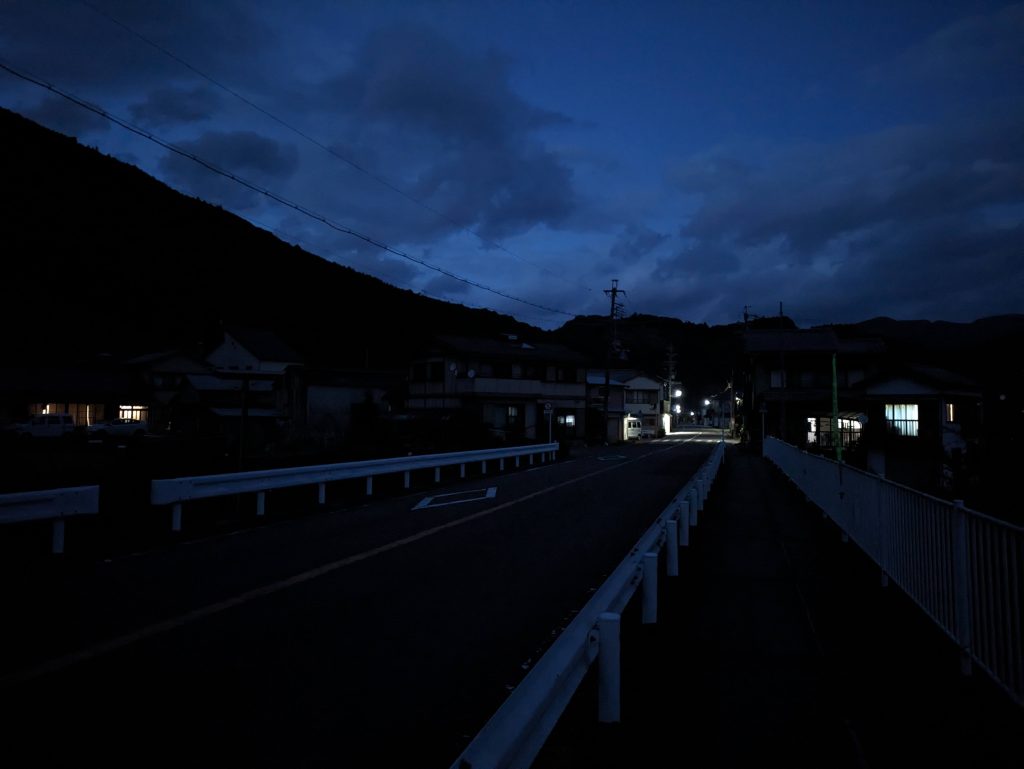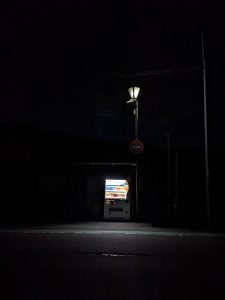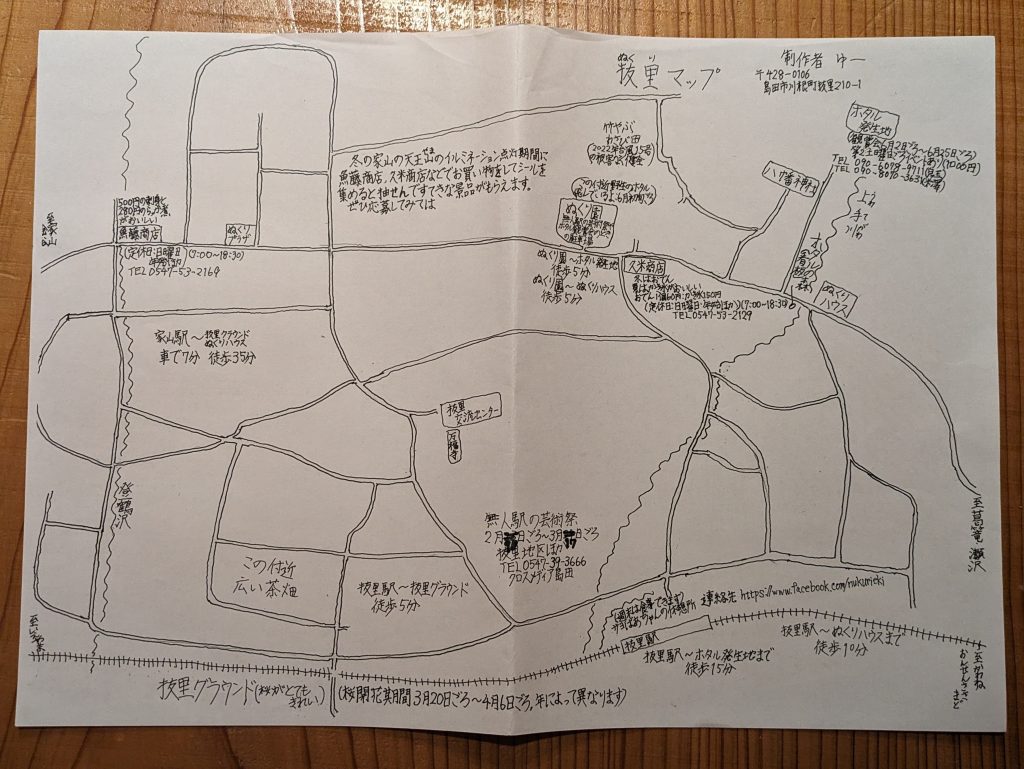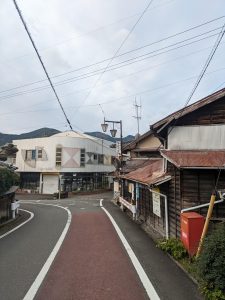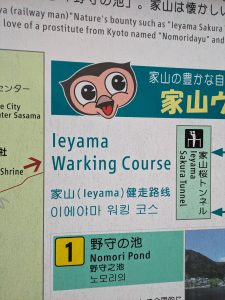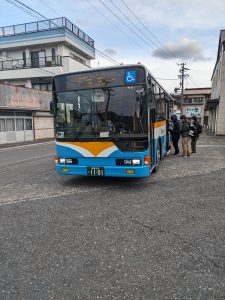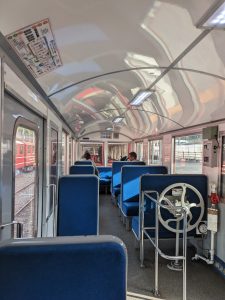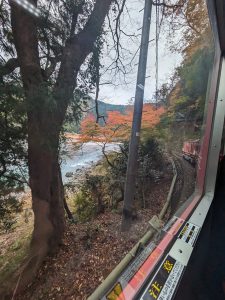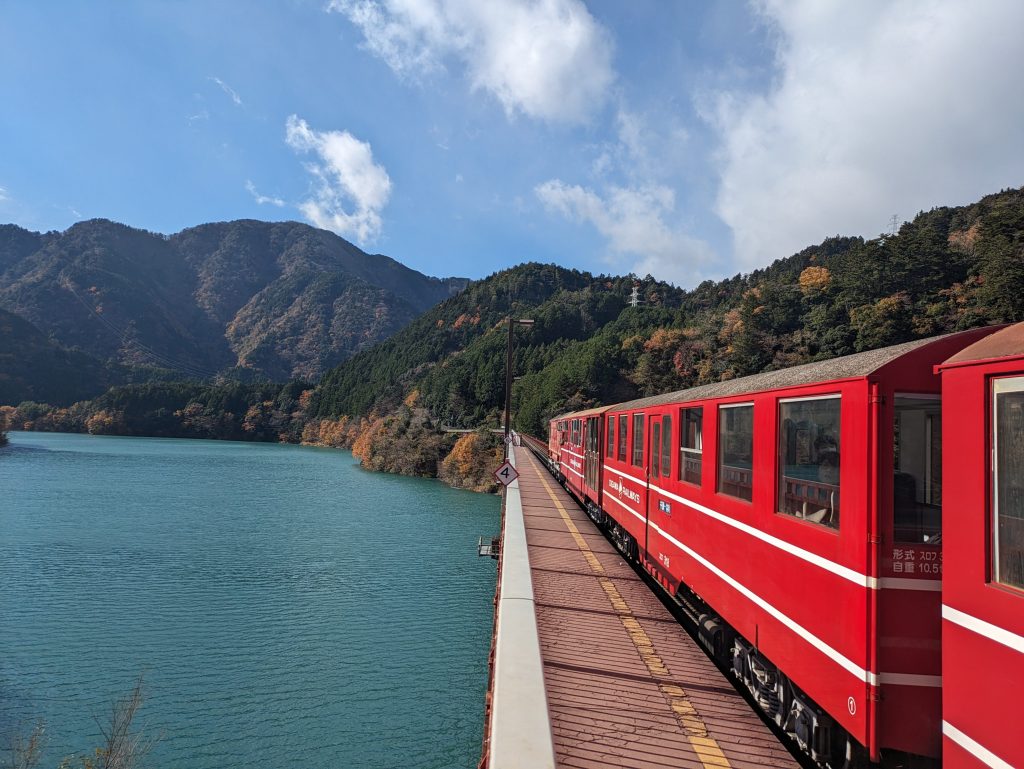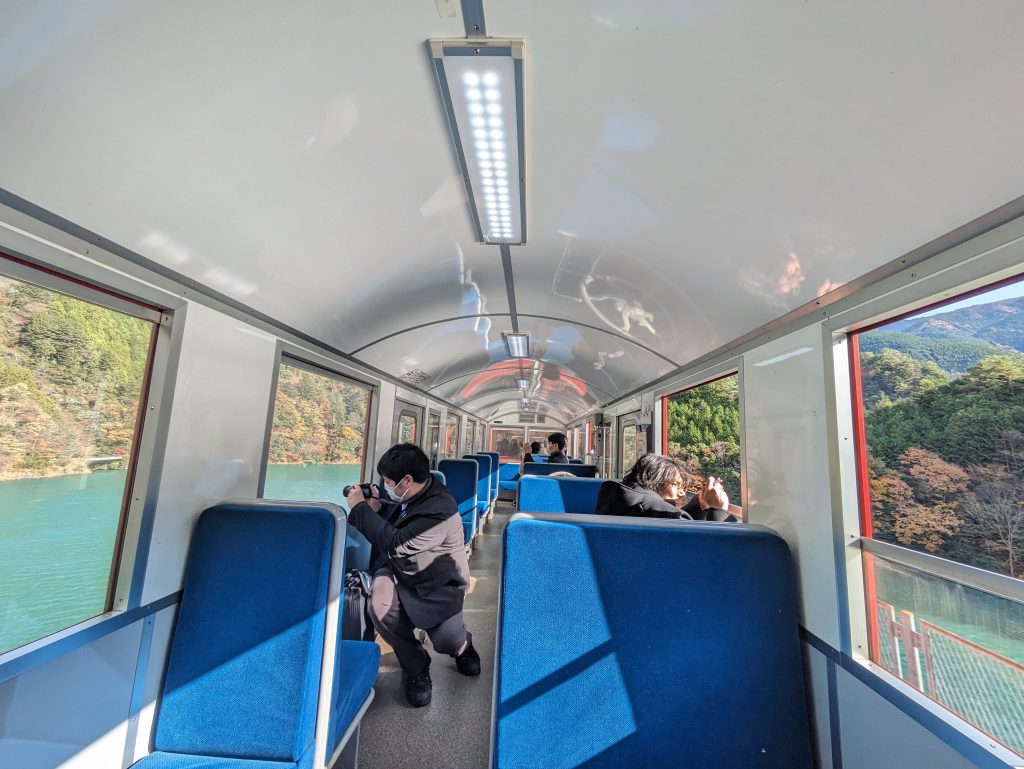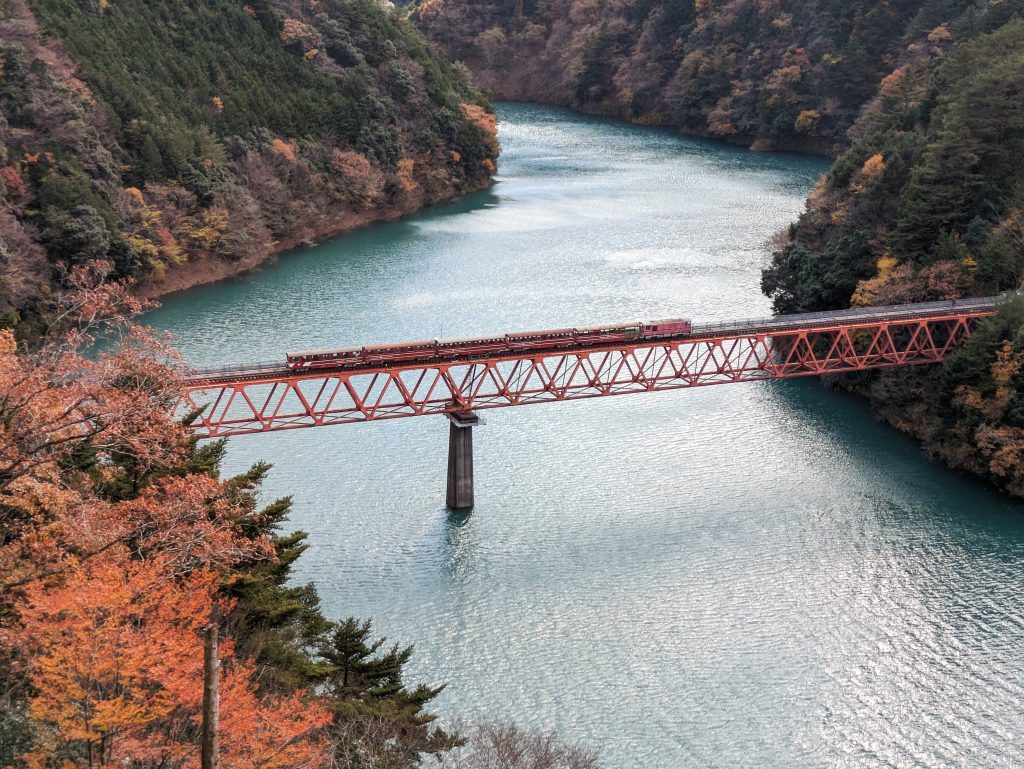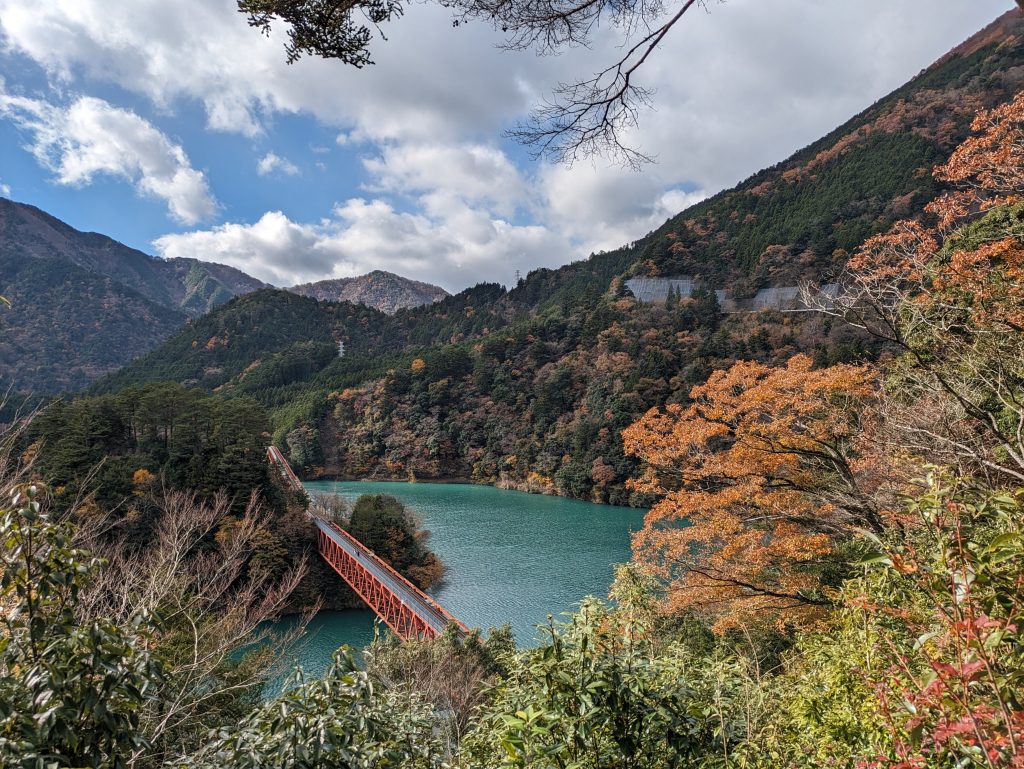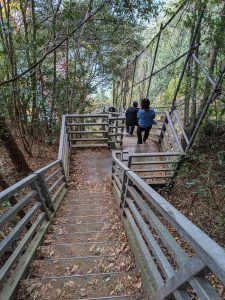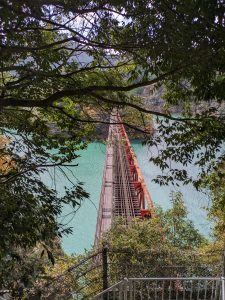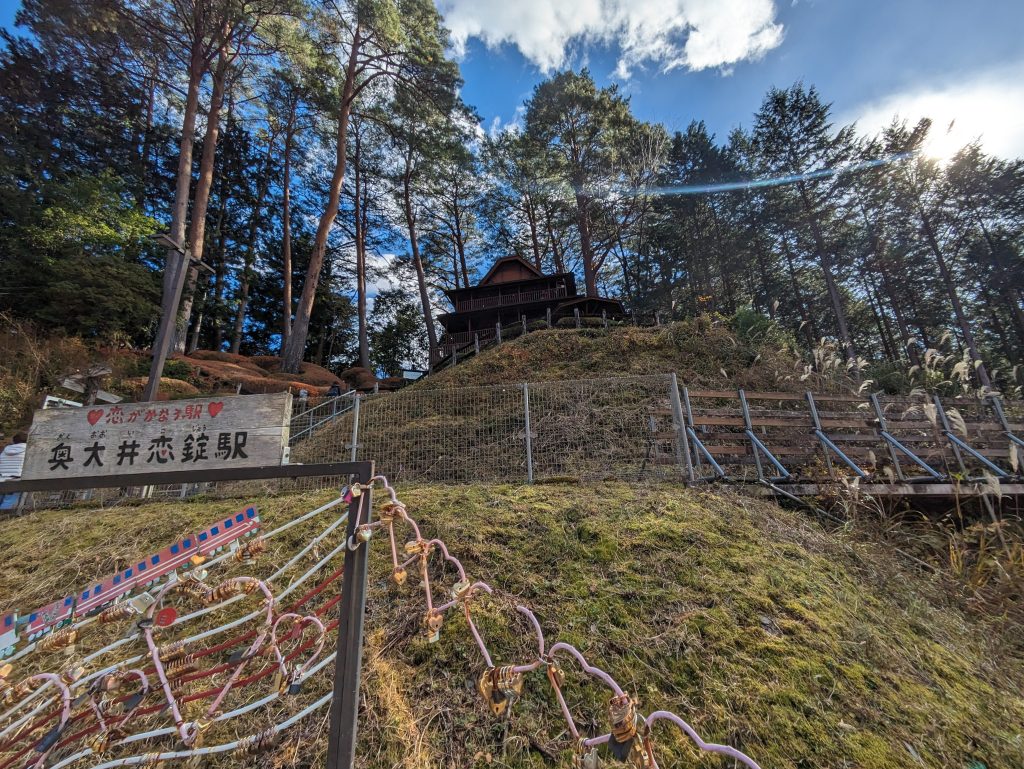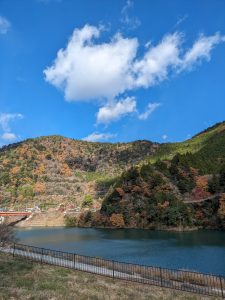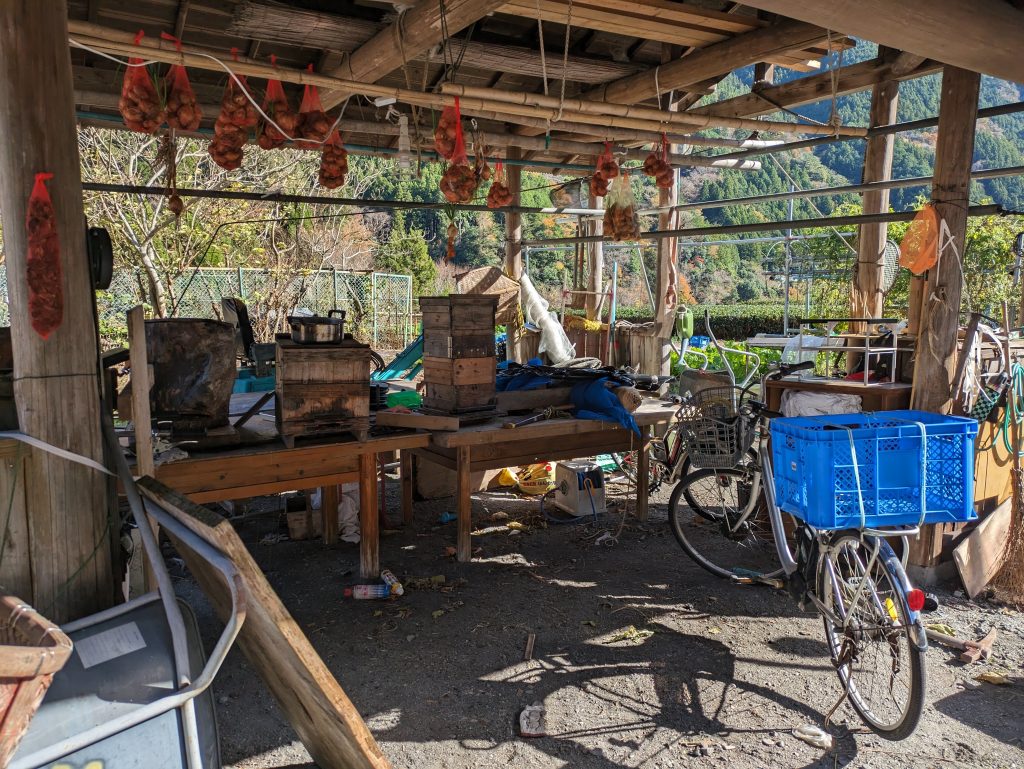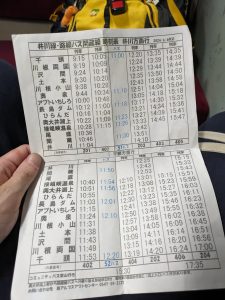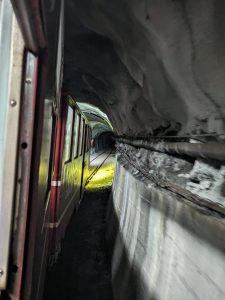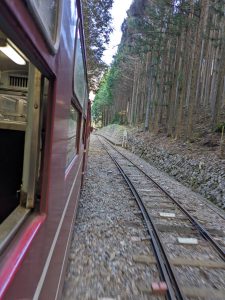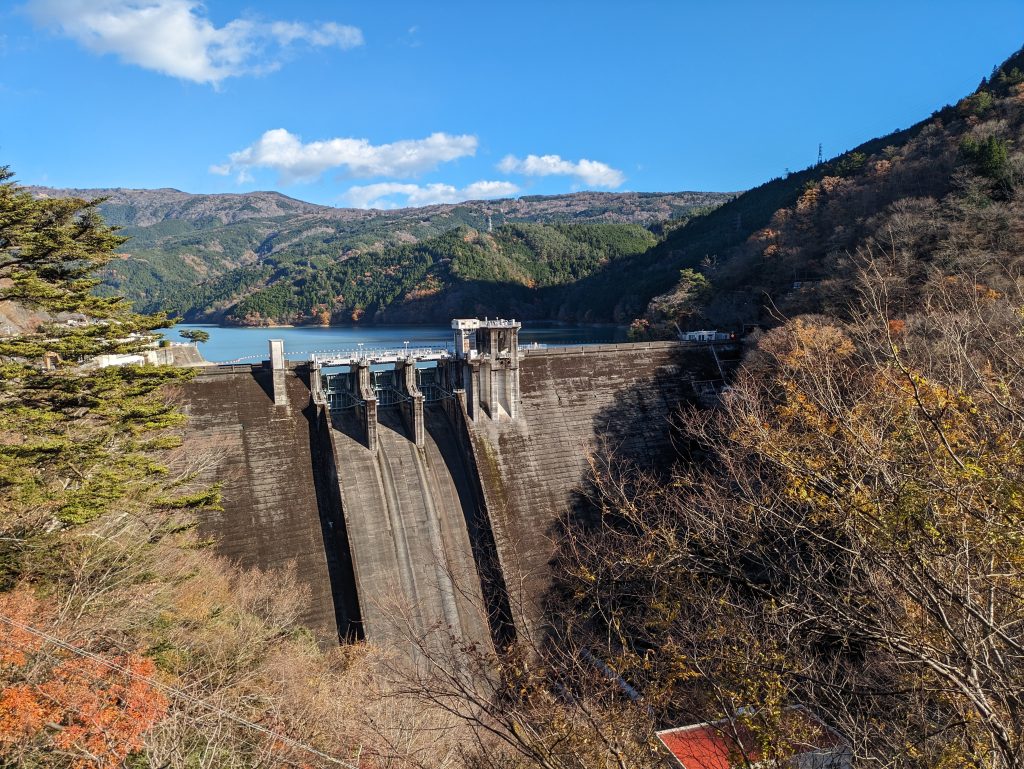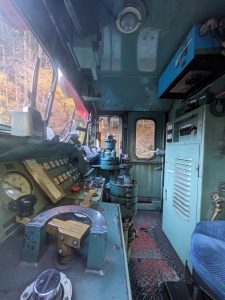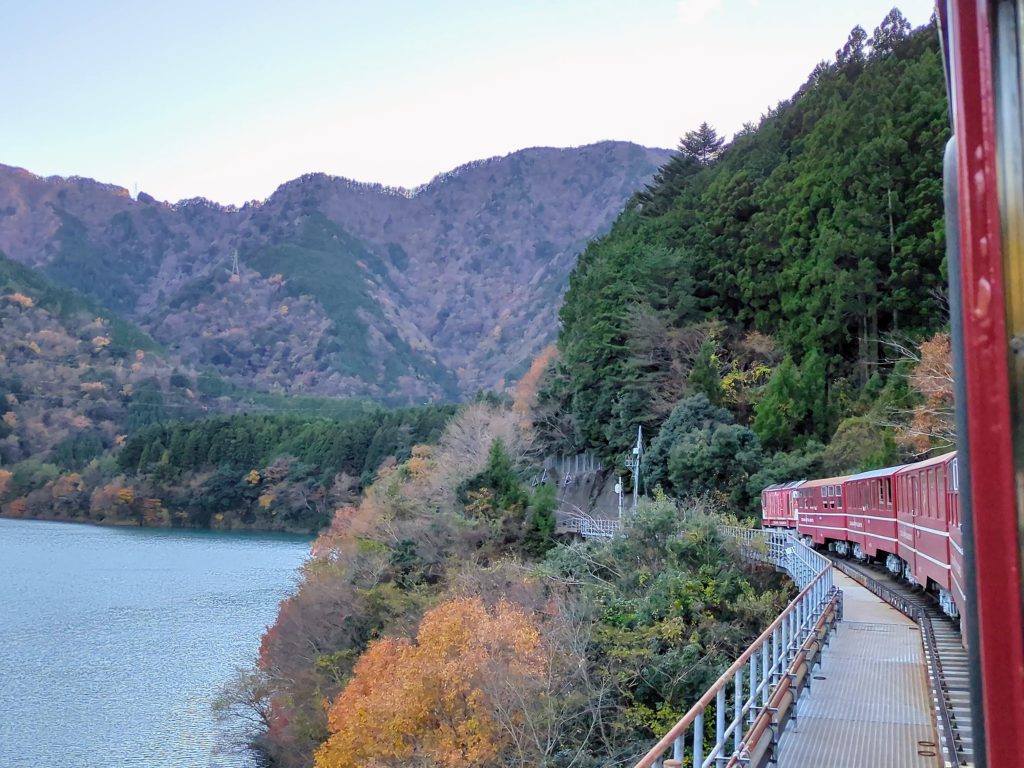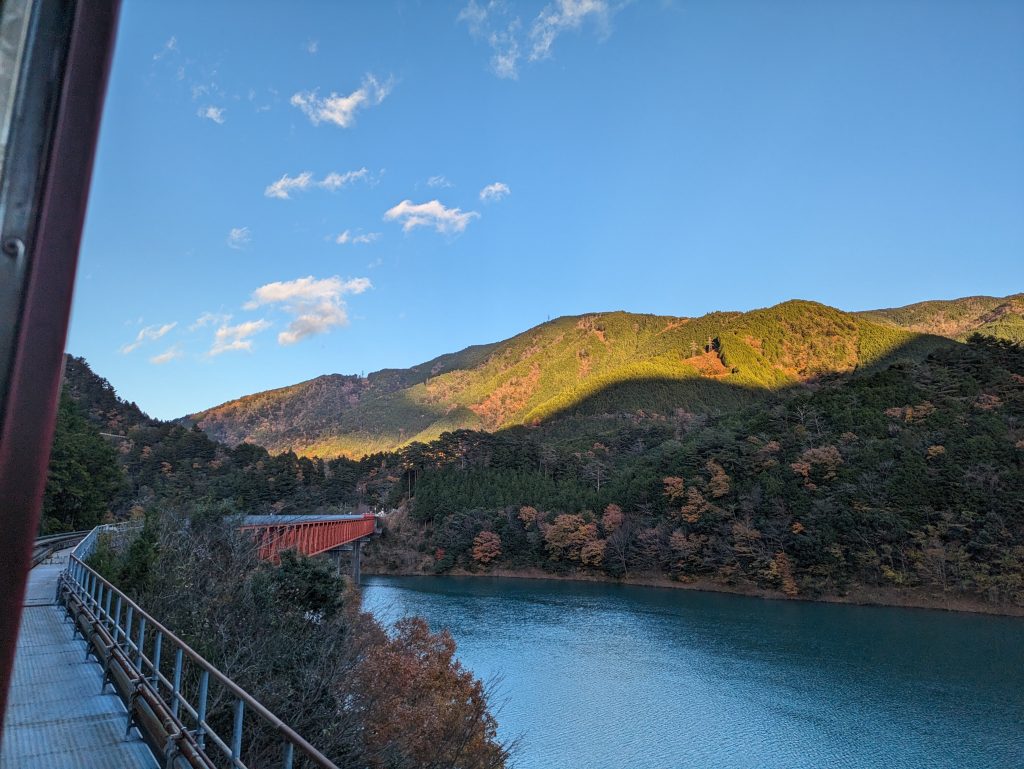I took the prettiest train ride of my entire life.
This is the second piece in my series of blogposts about my handful of recent1OK, not really recent now, it was back in December of last year, but I’m behind here!, short, 2–3 day trips. While the month prior I had very spontaneously headed down to Kyushu, this weekend’s target was just one prefecture over, to Shizuoka, and things couldn’t be quiiite as last-minute this time. I had been wanting to ride the Oigawa Railway’s two collinear lines for a while – the Ikawa Line in particular is one of Japan’s only forest railways and the only cog railway in the country, too – and I’d figured that when the fall2OK, again, not really fall, but December is unfortunately now when stupidly-hot Japan finally cools down and has the leaves change color… leaves were changing colors would be a perfect time to do it. However, the section connecting the two lines was washed away in a storm in 2022 and hasn’t been operating since. Taking the replacement bus service operated by the local town is a bit of a hassle, takes more time, and involves a lot of looking at Japanese-style timetables to figure out exactly which train to catch and when, plus securing a place to stay somewhere along the line in order to have enough time to go down and back in the daylight. Luckily I had some time to plan the week before, and there was a place that let me make a booking just a couple days ahead of time!
At the end of two eventful days, I had the absolute most magical, wonderful time exploring and staying in the little tea-rich town of Kawane, specifically the district Nukuri, filled with a heartwarming, inspiring – and unexpected – community of artists and farmers, against backdrop of an unbelievably magnificent train station and some of the prettiest views I’ve seen in the country, across bridges and through forests while traversing the course of the Oi River.
I started out by heading from my house in Nagoya down past Toyohashi and Hamamatsu to Kanaya Station, in the city of Shimada, Shizuoka Prefecture. Here I snagged their couple eki-stamps – showing the railway’s partnership with two other similar ones overseas, the Alishan Forest Railway in Taiwan and Brienz Rothorn Railway in Switzerland – and then walked to the much larger Shin-Kanaya Station 20 minutes away. This is where the steam locomotives, or “SL” trains, begin their operation, and I figured it’d be cool to ride my first one! I bought a limited express ticket in the gift shop-cum-ticket office and rode as far as the line goes (with the current closure) to Kawaneonsen-Sasamado Station. It was a very cool experience, rattling around in a super old carriage with metal fans on the ceiling and an engine powered by coal! I felt like I was in the 1800s or something. Here’s all my photos from the first day.
This is literally the most stereotypical old-school train one could possibly imagine.
Scooping coal into the engine! Stove? Burner? Whatever, I don’t know what that’s called, I’m not that type of train nerd. I like the travel, the sociology and equity aspects, visual communication design, spatial planning and systems engineering… pretty much everything except the machines, really, lol.
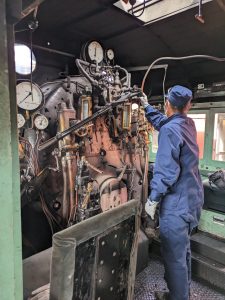
So much machinery. While I like analog components and abstractly how things work, I am fine with things like this being a pure black box to me.
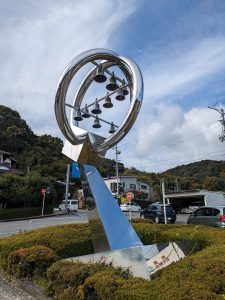
By the way, this city had a carillon too. Which I learned about recently. And now I’ve been seeing everywhere…
View out the window, with smoke blowing past.
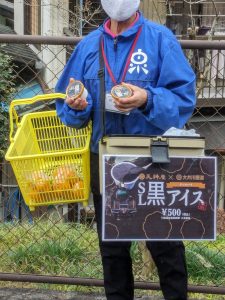
Someone was selling black “SL”-themed ice cream on the arrival platform. Thaaaat’s capitalism, baby.
Departing back toward the beginning of the line. A classic choo-choo at the end!
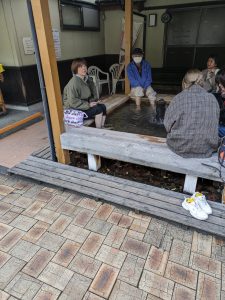
Walked for a bit to get to a michi-no-eki roadside station where they had this public foot bath.
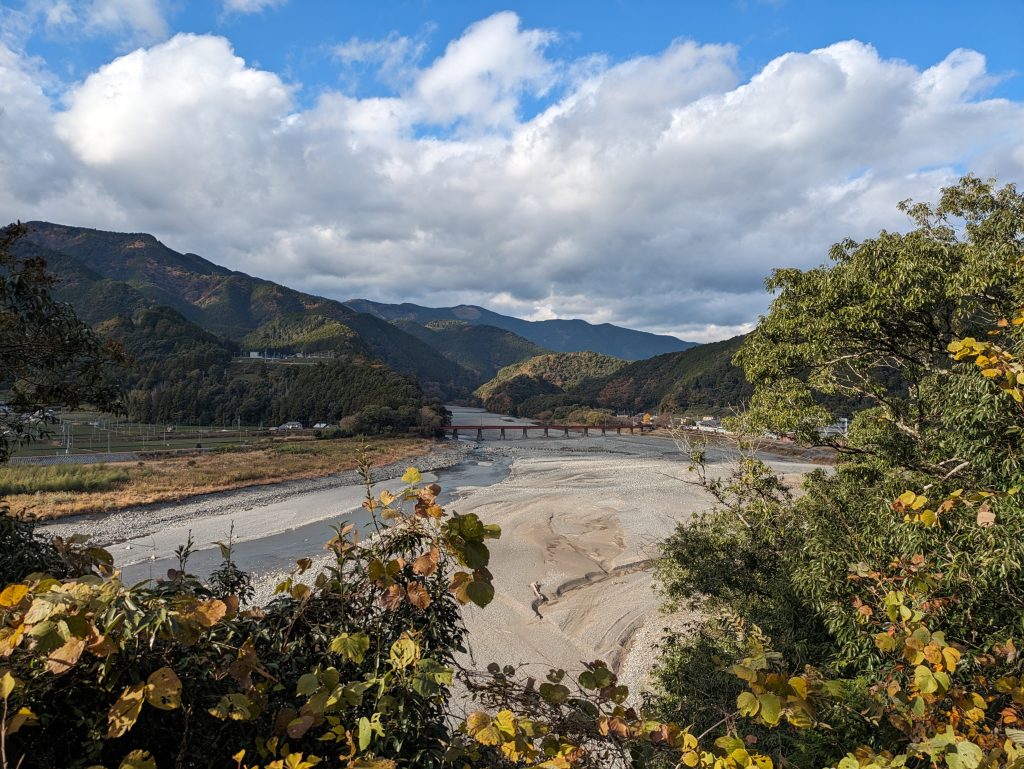
The Oi River was looking a little dry from right here. It gets a lot better (understatement of the month) as it runs further into the mountains.
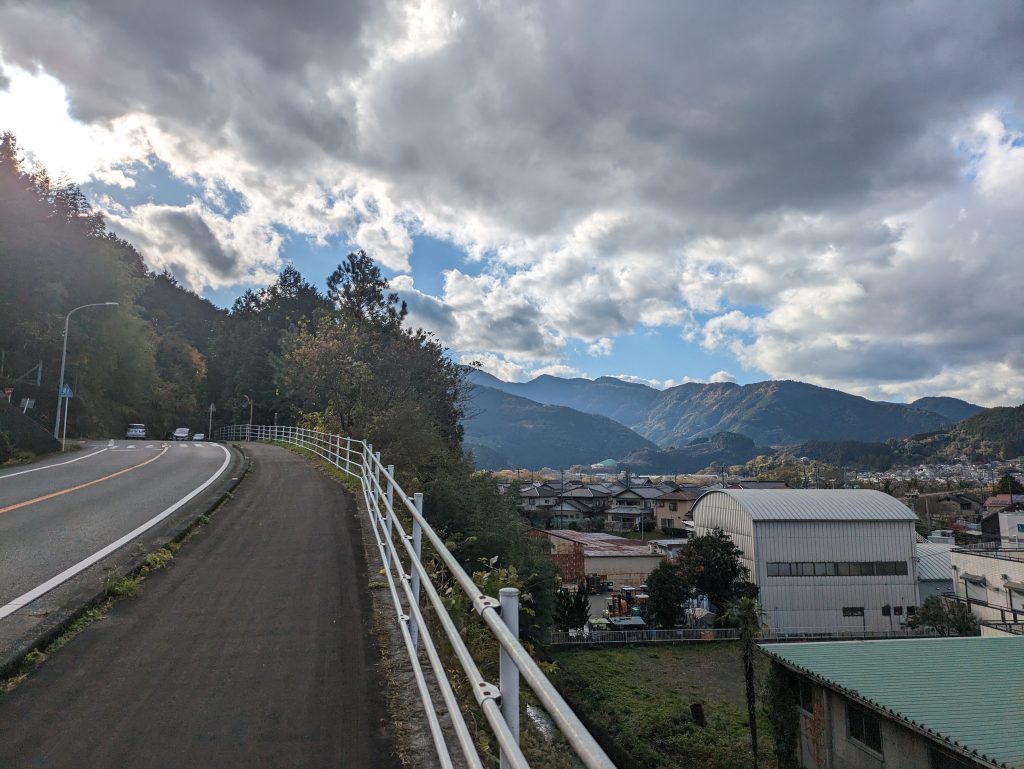
Walking up the side of the road since there’s no way to cross the river without going about 3 km to the south. (I could have just gotten off earlier, but this was more fun.)
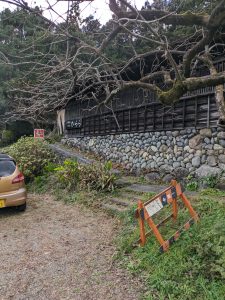
Trekked to a very out-of-the-way soba shop before crossing the river to get to where I was actually staying.
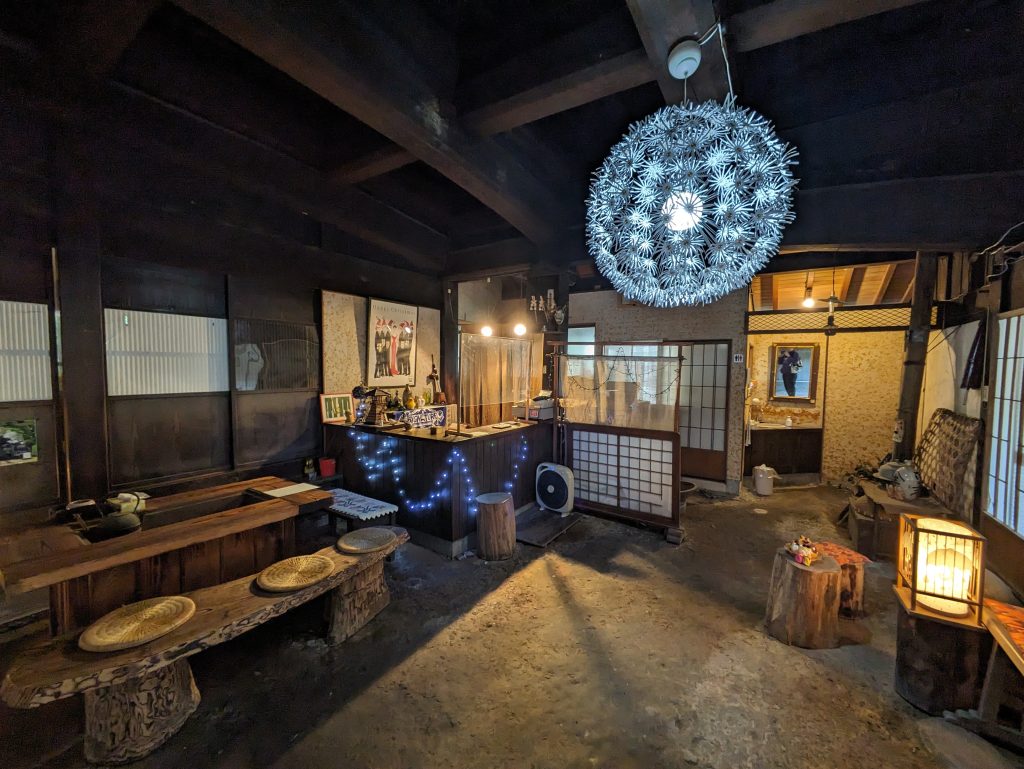
Inside of the shop. It took them a while to come out of the back and notice I was there to greet me, lol.
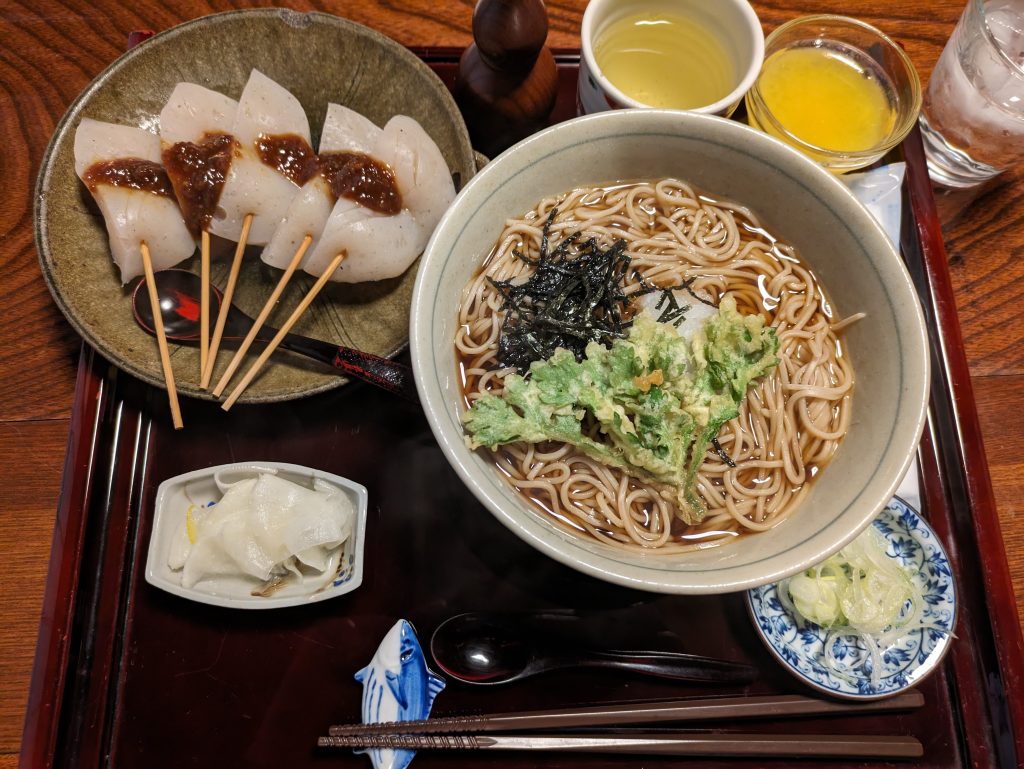
Lunch! It was good. I tried miso dengaku, a locally famous food named after this old Japanese tradition of the same name, because the dance involved wearing a white hakama and standing on a pole, which apparently these skewers of konnyaku resemble. I didn’t realize it was konnyaku, though… so as a non-fan of jelly-like stuff, I didn’t eat much of it.
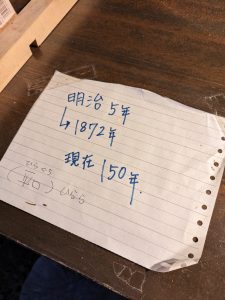
I asked the owner how long the place had been open and she pointed to this handy, pre-prepared sign which was already taped to a table. Presumably others had asked this question too…
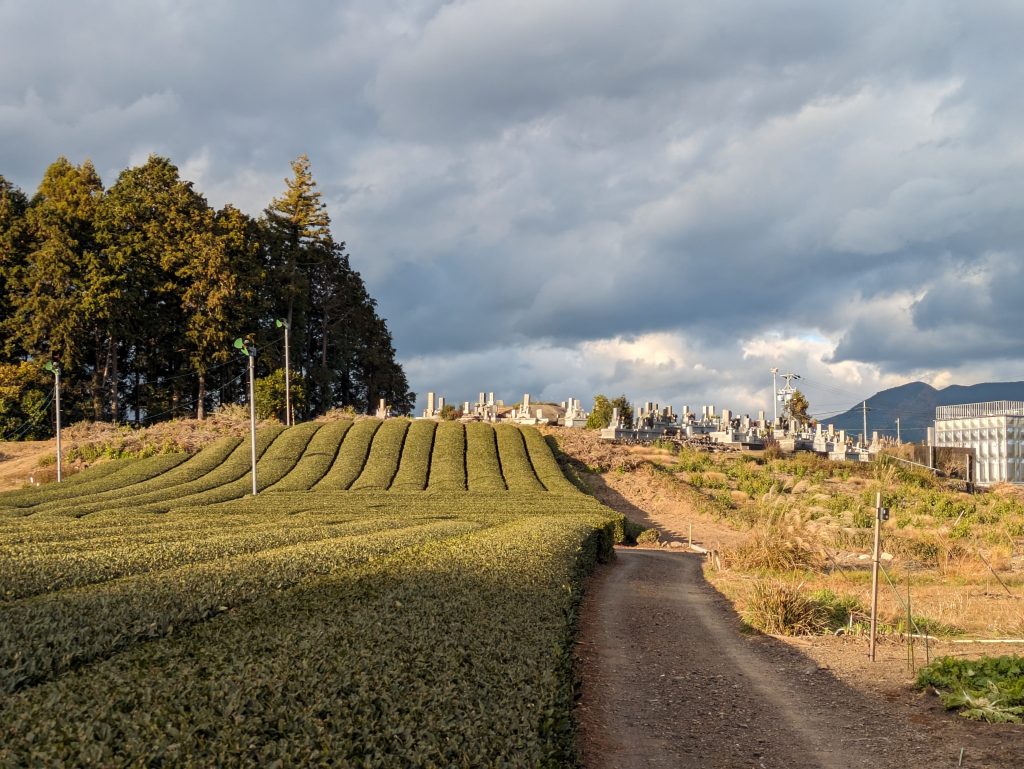
Walking toward the river crossing. There were tea fields as far as the eyes can see here. The fans are to constantly blow air on the tea leaves to prevent frost from forming which would ruin the tea!
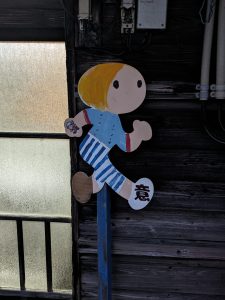
A simplistic tobidashi bouya.
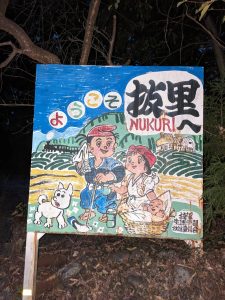
Walking the very hilly route to Nukuri, the former village (now officially combined with the town… which was later combined into a larger town) where the only reasonably-priced accommodation existed (and one of the only ones to exist period).
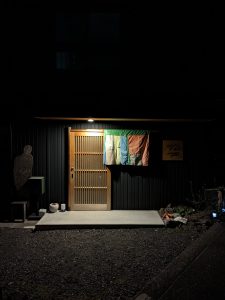
The front door of my guesthouse. The owners came across the road to meet me and show me around! It was a spacious place and I was the only one staying in the whole house.
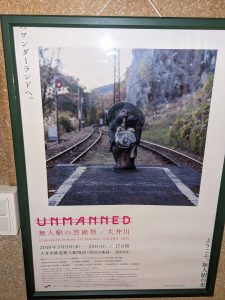
The people who ran the guesthouse help organize & host an art festival known as UNMANNED, named after the state of their local train station. All but abandoned by the railway, with a now-empty, unheated station building and nothing more, the town has since filled it back up and built an incredible community around it, gathering there every day to cook food and hang out and wave to passersby. Here was the poster from the 2018 iteration of the festival hanging in the house.
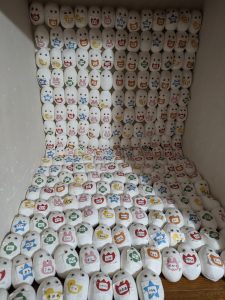
Named after one of the older women in the village, Nukuri Station has been semi-transformed into a place known as Grandma Sayo’s Rest Stop. Their Facebook page posts near-daily updates about what the community is cooking and eating that day at the station along with photos. The UNMANNED festival has been running for a few years and art exhibits are all around the village, in people’s yards, between the rows of tea, and in the station building. Here’s a piece that was in my guesthouse.

No trash separation???? This disrupts the wa. The Japanese government is having a full-on meltdown right now.
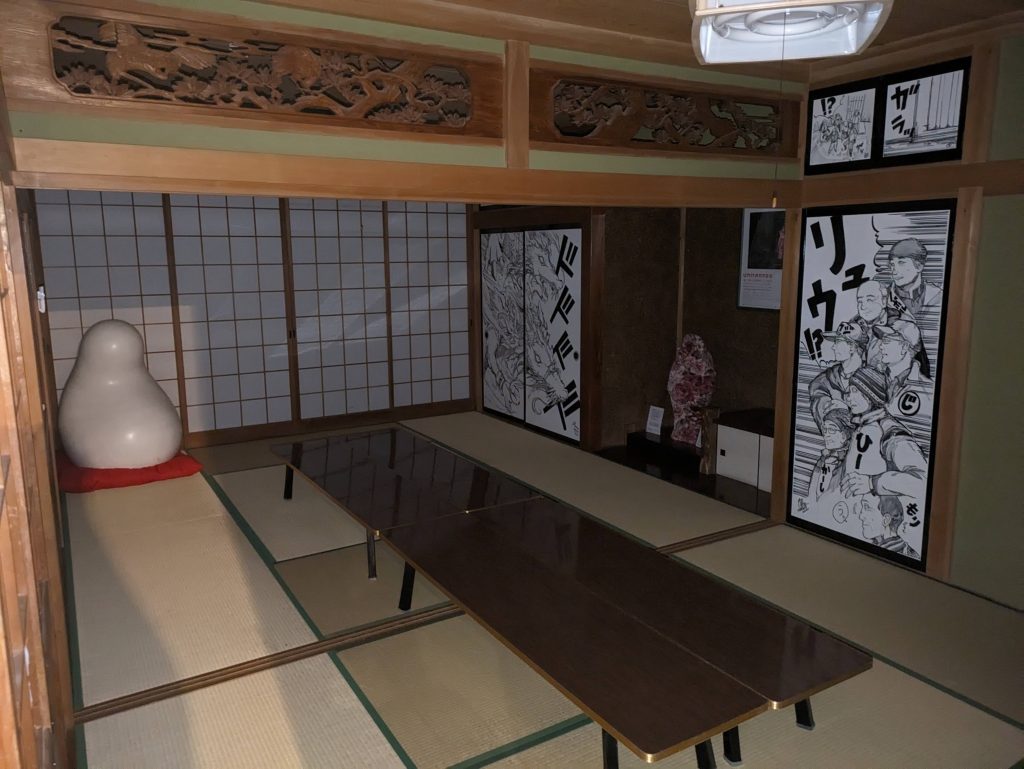
I was looking around the house since I had it to myself and stumbled upon this… figure…… looming in a corner… Apparently he’s a Buddhist monk and based on the tale of a local protective guardian deity. I read about the project online and learned that he “wandered around town” and sat in people’s houses for a week, and then they asked how his presence made people feel and how he affected their art. This was for the 2021 festival, so now he is at home. And sits here. Looming.
The following morning, I woke up bright and early, like 7 a.m., so I could catch the bus in time to the next operational part of the railway. The rest of the photos and videos are from day two!
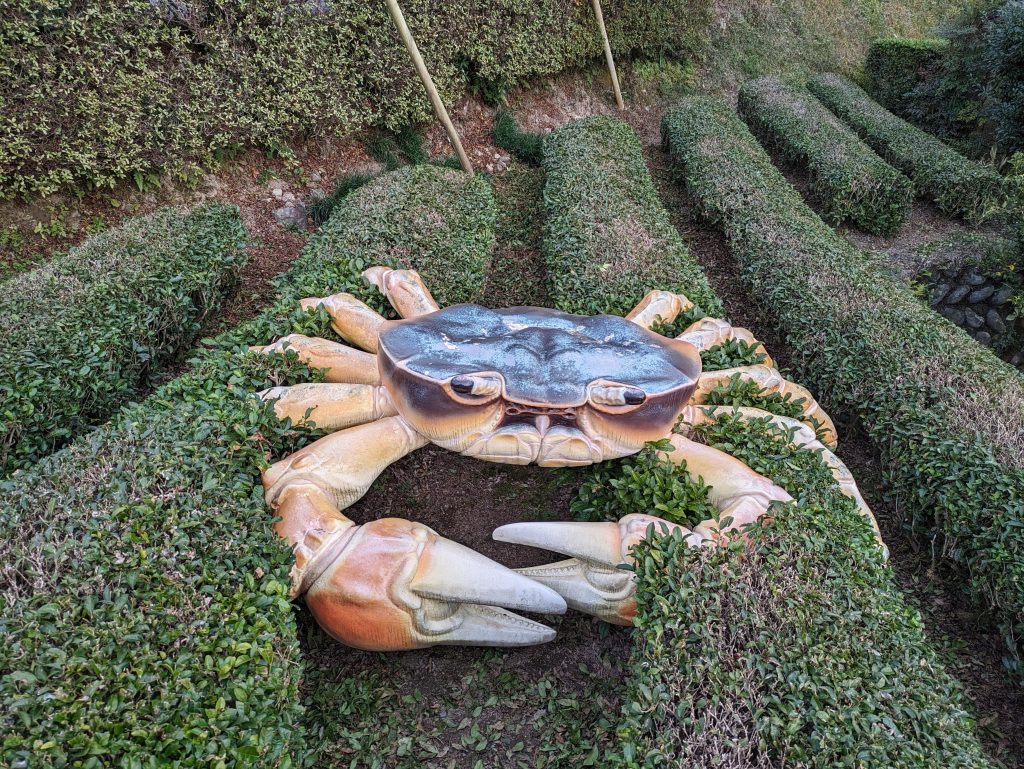
When I stepped out of the door, my first time seeing things in the light, I was greeted by this giant crab sculpture sitting in the tea bushes.
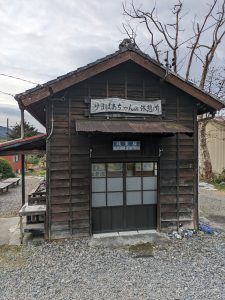
The unmanned Nukuri Station building, now revitalized as the eatery & neighborhood hangout as mentioned above.
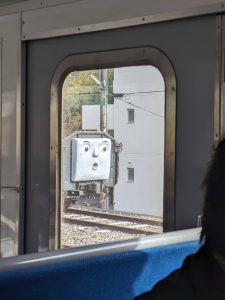
The company runs trains that look like the characters from the anglo-fascist series Thomas the Tank Engine. Lots of little kids come to ride them as a big tourist pull for the railway. They are scary.
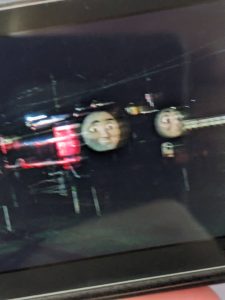
Another passenger (who also likes iDOLM@STER U149 and started talking to me because of the pin on my bag, based) showed me pics he and his friend took the previous night. HORRIFYING.
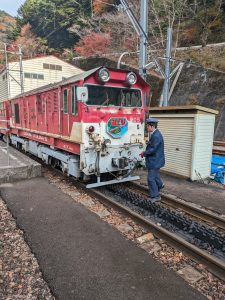
The train stops at Abt Ichishiro Station where it becomes a cog/rack railway! The track in the middle is for a gear to hook into as it gets pushed up a steep hill.
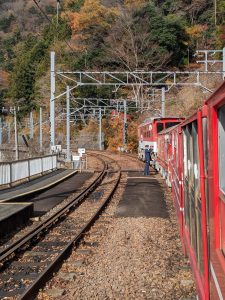
Locomotive connecting from behind. More info on the Abt rack system is on the Oigawa Railway website here.
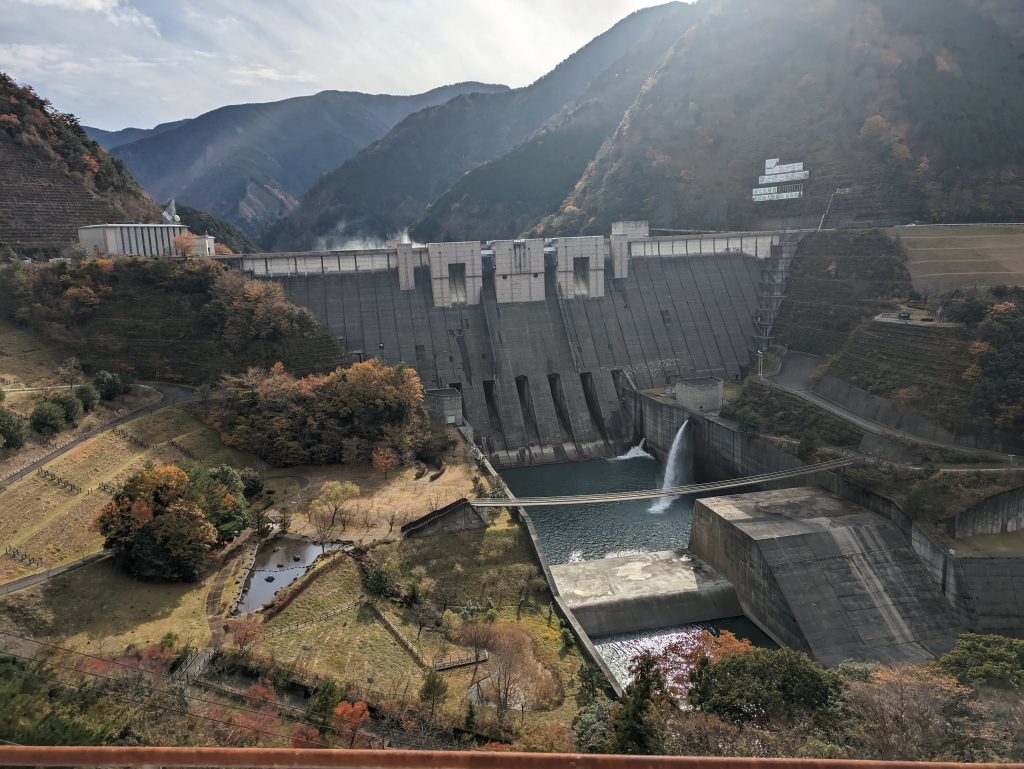
The rack rail runs up a steep gradient until the next station, right outside Nagashima Dam.
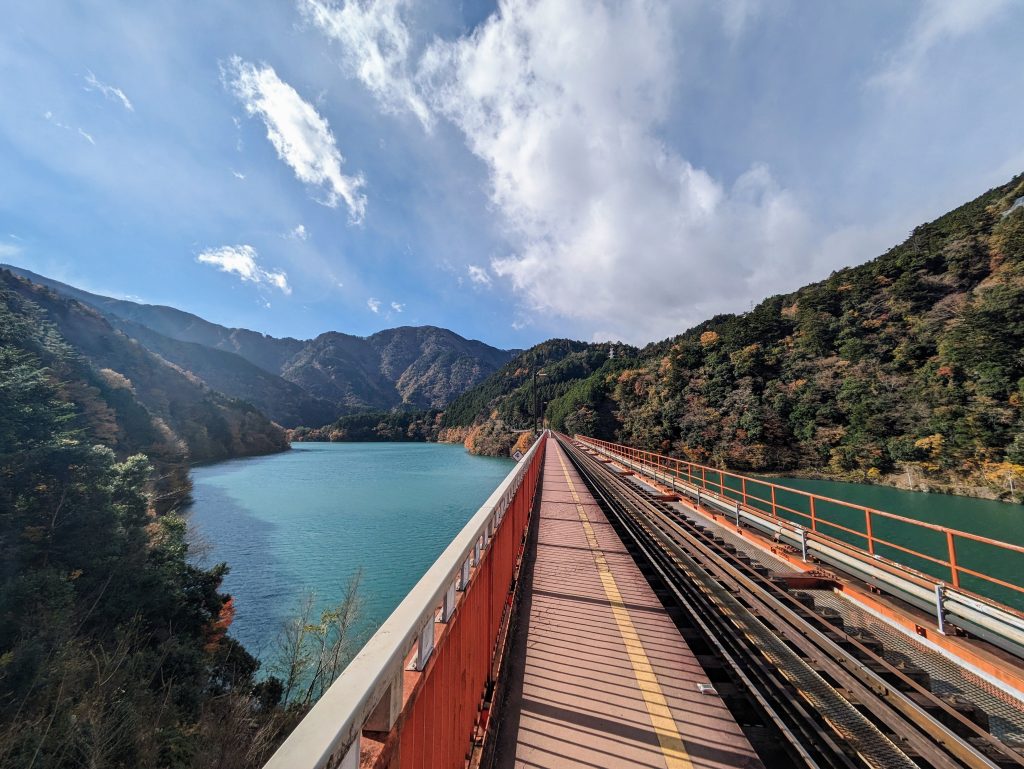
The absolute prettiest train station platform ever, on an island in the middle of the river. (OK, not technically an island, but it looks like one and sticks out into a horseshoe bend of the river and isn’t accessible except via this platform so it functions like one too.)
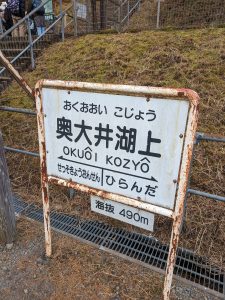
The station sign is using both kunrei-shiki and the old-style circumflex accent instead of macrons to represent long vowels! How fun!
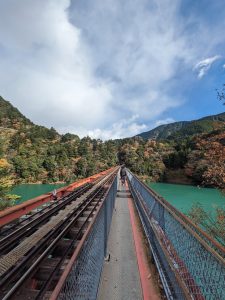
One side of the track has a pedestrian walkway – apparently called the “Rainbow Bridge” – so you can cross over to land (and not just be stuck on the “island”).
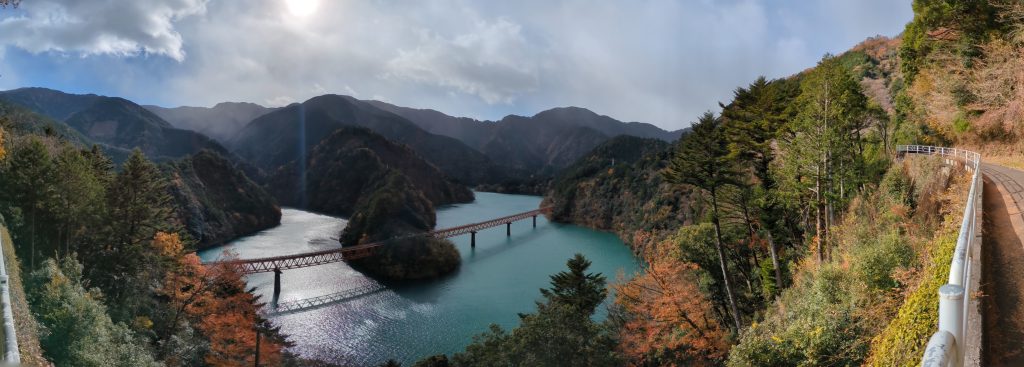
Hiked about ten minutes to the nearby lookout on the road that winds up through the nearby mountains and provides a pretty amazing vantage point of Okuōikojō Station.
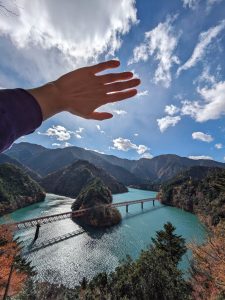
Was a bit cloudy when I first got there – there were even raindrops hanging in the air due to the altitude – but the sun came out shortly after. Made the colors look totally different!
I waited a while (paying attention to the train schedules, of course) to watch a train crossing the bridge and pulling into the station. Also sorry if this doesn’t buffer, WordPress is finicky, refreshing seems to fix it for me lol. Professional software engineering advice here, folks.
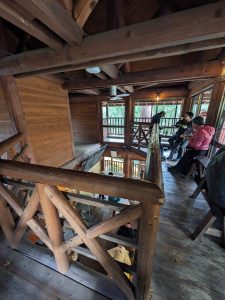
The little lodge at the station on the island which was unexpectedly closed. I should have brought some lunch or more snacks…
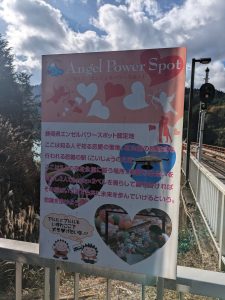
Welcome to the Angel Power Spot. Also oh my god look at the cog rail mascots with gear teeth for hair at the bottom.
Train headed in the opposite direction, which passed when I was walking back up the stairs for a second time…
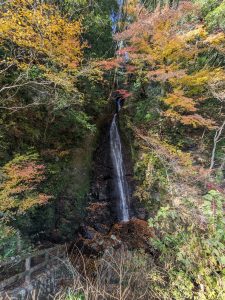
…which I did because I decided to just walk to the next station since there was some potential food on the way and I had time until the next train. There were some waterfalls on the way.
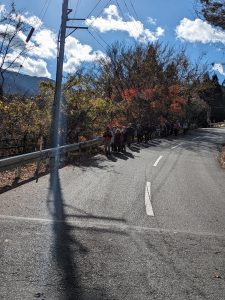
Suddenly a Chinese tour group appeared??? I ran into them later and I think they were just staying at one of the nearby onsen.
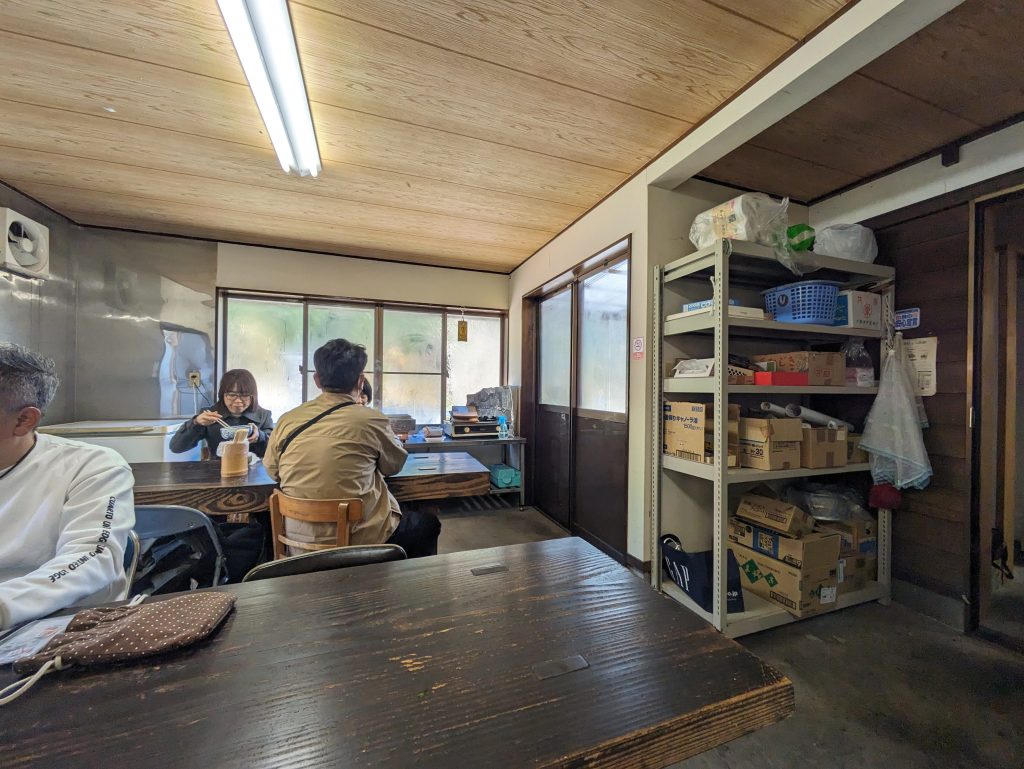
The only real place to get food. I had time for some noodles. There were a few other people there, including another foreigner who was a former resident and had returned on vacation!
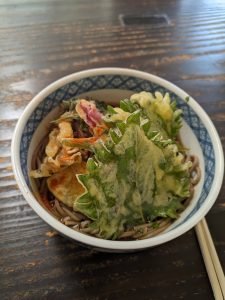
Got some soba. Udon was sold out. They let me get extra shiso (beefsteak plant leaf), my favorite.

Talked to a guy in the noodle shop who told me he collected dam cards. I of course showed him my IC card collection in return. He had just snagged this one from the dam we passed an hour earlier!
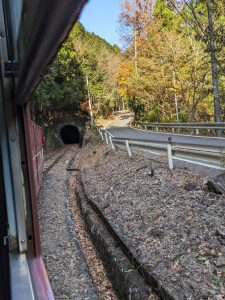
Being able to open the windows – especially along the sections with curved track where you can really see what’s coming ahead – was super nice!
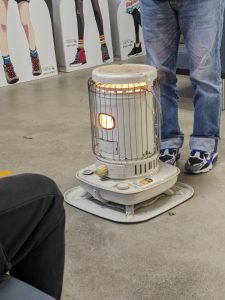
The station building at the terminus of the line was unheated, so they brought out kerosene heaters to keep people warm in the lobby area.
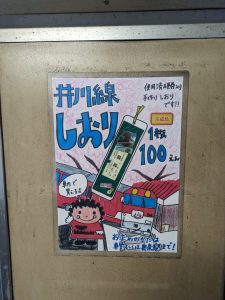
The staffed ticket counter sold handmade bookmarks decorated with old ticket stubs + photos taken along the rail line for only ¥100. :’) I bought one, of course!
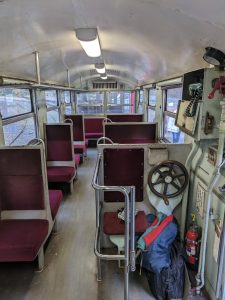
Check out the old equipment! The teal corded phone on the right was used by the conductor as they made announcements, hooked up to a speaker system in the cars.
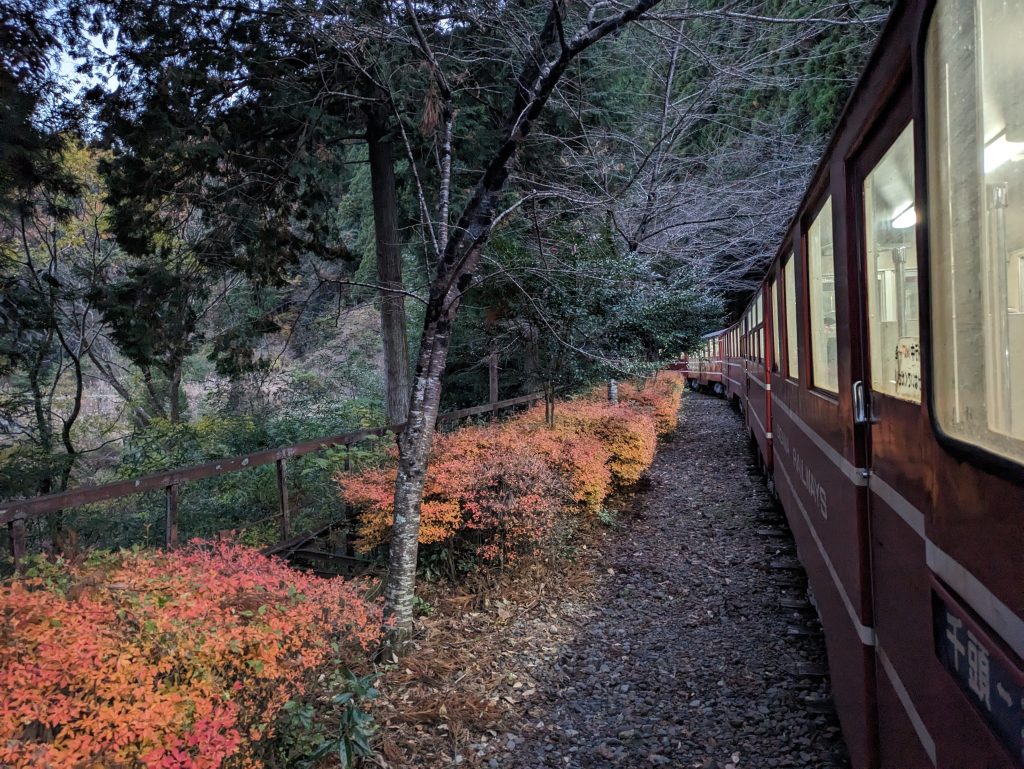
The outside light getting dimmer while the glow from inside the train began to feel brighter was really nice.

Arrived back at Ikawa Station, the start of the Ikawa Line. Lots of LED lights were up for Christmas!
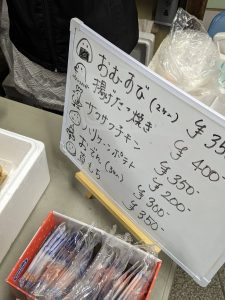
Some people from the local community were selling small foodstuffs in the station. I grabbed a musubi (not the typical word you hear used to refer to onigiri in Japanese, which was a nice throwback to Hawaiʻi!) There was a guy selling grilled ayu (sweetfish) outside but he was sold out :(
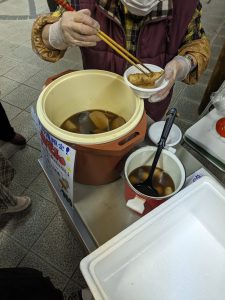
December = the classic time for oden!
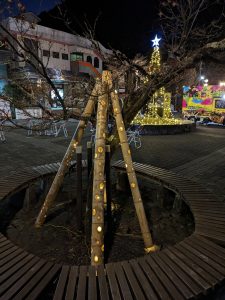
Outside of Ikawa Station while waiting for the connecting bus back. I loved the look of the lit up, hollowed out bamboo with holes in it.
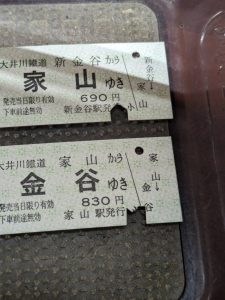
My first time seeing real 鋏こん kyokon!! These are punched made in train tickets from old-school ticket punches. Every station typically had a unique shape. I learned about these a few months prior (and added it to everyone’s frequently used Japanese–English electronic dictionary/corpus too).
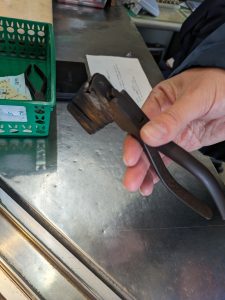
The aforementioned, old-fashioned 改札鋏 kaisatsu-basami… ticket punches (lit. ‘ticket inspection scissors’)! Used waaay back before automatic ticket gates existed. Also my first time seeing one for real.
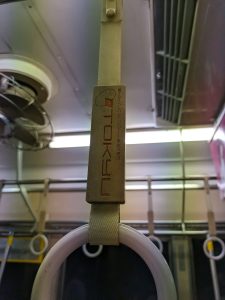
And finally, I rode the local train back to Kanaya Station. Based on the つり革 tsurikawa (hanging hand strap), it looks like they had procured their rolling stock from Tokyu in Tokyo! (Wikipedia actually tells me they’ve purchased old trains from companies all over the country.)
And then it was just riding local trains home again for what was quite a late night after what was quite a wonderful day. I tried to sleep a lot, considering I was leaving to travel almost 1,100 km only six days later! More on that soon.


